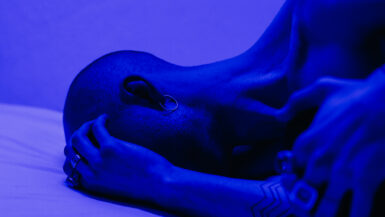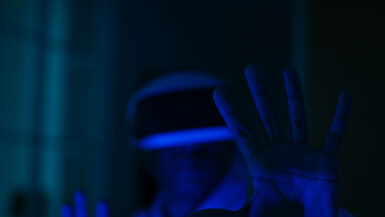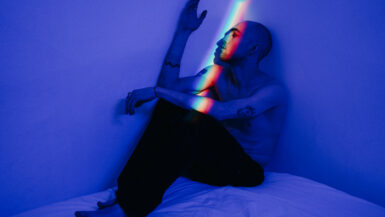In today’s rapidly evolving technological era, our daily lives are increasingly influenced by various digital devices. With this increased exposure to screens comes a growing concern about the impact of blue light on children’s sleep patterns. The following article delves into the effects of blue light emitted from electronic devices on sleep quality, circadian rhythms, and overall well-being in children. We will discuss the science behind blue light, its influence on the production of the sleep hormone melatonin, and provide evidence-based recommendations for parents to help their children maintain healthy sleep habits in this digital age. Join us as we explore this critical issue that affects the sleep and productivity of our youngest generation.
Encouraging Healthy Screen Time Habits for Better Sleep
As parents, it is essential to understand the impact of screen time on children’s sleep patterns and take proactive measures to ensure a healthy balance between technology usage and restorative sleep. In this section, we will discuss various strategies to encourage healthy screen habits, leading to better sleep and overall well-being for children.
Establishing a Consistent Bedtime Routine
One of the most effective ways to promote healthier sleep habits in children is by creating a consistent bedtime routine. This routine should include relaxing activities such as reading or storytelling, which help the child wind down and signal that it is time for sleep. Limiting screen exposure during this time is crucial, as the blue light emitted from devices can interfere with the natural production of melatonin, a hormone responsible for regulating sleep.
Setting Screen Time Limits
Implementing reasonable screen time limits is essential to maintaining a balance between technology usage and restorative sleep. Encourage children to engage in alternative activities such as outdoor play, sports, or hobbies that do not involve screens. Research suggests that limiting screen time to about two hours per day can lead to better sleep quality and increased daytime alertness.
Creating a Tech-Free Bedroom Environment
Creating a bedroom environment free from digital devices can significantly improve children’s sleep quality. This practice helps to establish a clear distinction between sleep and wakefulness, allowing the child to associate their bedroom with relaxation and rest. Additionally, removing devices from the bedroom eliminates the temptation to engage with screens before bedtime or during the night, reducing the potential for blue light exposure and sleep disturbances.
Using Blue Light Blocking Technology
While limiting screen time is an important step in promoting healthy sleep habits, it is not always feasible to avoid screens entirely. In such cases, blue light blocking technology, such as screen filters, apps, or specialized eyewear, can help mitigate the effects of blue light exposure. These tools work by reducing the amount of blue light emitted from screens, thus minimizing its impact on sleep. However, it is essential not to rely solely on blue light blocking technology and still prioritize healthy screen habits.
Educating Children About the Impact of Blue Light on Sleep
Knowledge is power, and educating children about the connection between blue light and sleep can empower them to make informed decisions about their screen usage. Teaching children to recognize the importance of sleep and the potential impact of blue light will help them develop a greater understanding of their well-being and take responsibility for their screen habits.
By promoting healthy screen time habits, parents can help their children strike a balance between technology usage and restorative sleep. Limiting screen time, establishing a consistent bedtime routine, and creating a tech-free bedroom environment are all effective strategies for mitigating the impact of blue light on children’s sleep patterns. With these measures in place, children can enjoy the benefits of technology while maintaining healthy sleep habits essential for their growth and development.
Blue Light Impact on Academic Performance and Concentration
The influence of blue light on children’s sleep patterns extends beyond bedtime and can significantly affect their academic performance and concentration. As children spend more time on screens, they are more likely to experience sleep disturbances, which can, in turn, impact their ability to focus and perform well in school. In this subsection, we will explore the relationship between blue light exposure, sleep quality, and academic performance, shedding light on the crucial role that sleep plays in children’s cognitive development.
The Connection Between Sleep and Cognitive Function
Adequate sleep is essential for optimal cognitive function, including memory, attention, and problem-solving skills. Sleep deprivation, even in mild forms, can impair these critical aspects of learning and academic performance. Studies have shown that students who do not get enough sleep struggle with retaining information, staying focused in class, and managing their emotions. As blue light exposure is known to disrupt sleep patterns, it poses a considerable risk to children’s academic success.
Reduced Sleep Quality and Its Effects on School Performance
Prolonged exposure to blue light from screens can lead to reduced sleep quality, characterized by difficulties falling asleep, frequent awakenings, and overall restless sleep. These sleep disturbances can result in daytime sleepiness, decreased alertness, and impaired concentration, all of which can negatively impact a child’s academic performance. Research has shown that students with poor sleep quality are more likely to have lower grades, increased absenteeism, and a higher likelihood of behavioral problems at school.
How Blue Light Exposure Can Hinder Effective Learning
One of the primary ways in which blue light exposure negatively impacts academic performance is by suppressing the production of melatonin, the sleep hormone responsible for regulating our circadian rhythms. When children spend time on screens close to bedtime, the blue light emitted from these devices can interfere with their natural sleep-wake cycle, making it difficult for them to fall asleep and stay asleep throughout the night. This disruption can lead to sleep deprivation, which has been shown to impair cognitive processes essential for effective learning.
Encouraging Healthy Screen Habits for Optimal Cognitive Development
Given the clear connection between blue light exposure, sleep quality, and academic performance, it is vital for parents and educators to encourage healthy screen habits in children. By setting appropriate screen time limits, implementing a consistent bedtime routine, and creating a tech-free bedroom environment, children can enjoy the benefits of technology without compromising their sleep or cognitive development. Additionally, promoting healthy sleep habits can have long-lasting positive effects on children’s overall well-being and academic success.
In summary, understanding the impact of blue light on children’s sleep patterns is crucial to ensuring their academic performance and concentration are not negatively affected. By taking proactive measures to limit screen time and promote healthy sleep habits, parents and educators can help children achieve a balance between technology usage and restorative sleep, ultimately supporting their cognitive development and academic success.
Understanding Blue Light Sources and Children’s Exposure
In our modern world, children are exposed to various sources of blue light, which can impact their sleep patterns and overall well-being. It is essential for parents and caregivers to understand these sources and take necessary precautions to minimize the potential negative effects on children’s sleep. In this subsection, we will explore the common sources of blue light exposure and discuss practical ways to reduce children’s exposure to blue light, ultimately promoting healthier sleep habits.
Common Sources of Blue Light Exposure
Blue light is a high-energy visible (HEV) light, part of the visible light spectrum. It is emitted naturally by the sun and artificially by digital screens, LED lights, and compact fluorescent lamps (CFLs). Some of the most common sources of blue light exposure in children include:
1. Electronic devices: Smartphones, tablets, laptops, and televisions are among the most prevalent sources of blue light exposure in children’s daily lives. As the use of these devices has become increasingly common, so has the potential for blue light exposure and its impact on sleep.
2. LED lighting: Many homes and schools have shifted to using LED lights, which emit a higher amount of blue light compared to traditional incandescent bulbs. This increased exposure to blue light can contribute to sleep disturbances in children.
3. Compact Fluorescent Lamps (CFLs): Similar to LED lights, CFLs emit more blue light than incandescent bulbs. They are commonly used in households and educational settings, further increasing children’s blue light exposure.
Reducing Children’s Exposure to Blue Light
Understanding the sources of blue light is crucial in taking steps to reduce children’s exposure and promote healthier sleep patterns. Here are some practical ways to minimize blue light exposure for children:
1. Limit screen time: Encourage children to engage in activities that do not involve screens, such as outdoor play, sports, or hobbies. Limiting screen time to about two hours per day can help reduce blue light exposure and improve sleep quality.
2. Use blue light blocking technology: While it is not always possible to avoid screens completely, utilizing blue light blocking technology, such as screen filters, apps, or specialized eyewear, can help minimize the effects of blue light exposure.
3. Opt for warmer lighting: Replace LED lights and CFLs with warmer lighting options, such as incandescent bulbs or warm white LED lights, which emit less blue light. This can help create a more sleep-friendly environment for children.
4. Encourage natural light exposure during the day: Exposing children to natural sunlight during the day can help regulate their circadian rhythms and improve sleep quality. Encourage outdoor activities and open curtains to let in natural light.
By understanding the various sources of blue light exposure and taking steps to reduce its impact, parents and caregivers can help children maintain healthier sleep habits. Through a combination of limiting screen time, utilizing blue light blocking technology, and creating a sleep-friendly environment, children can enjoy the benefits of technology without compromising their sleep quality or overall well-being.
Practical Tips for Reducing Blue Light Exposure before Bedtime
As we have discussed the potential impact of blue light on children’s sleep patterns, it is vital to explore practical ways to minimize blue light exposure, particularly before bedtime. In this subsection, we will provide a range of tips and strategies that parents and caregivers can implement to reduce blue light exposure during the crucial hours leading up to sleep, ultimately supporting healthier and more restorative sleep for their children.
Create a Screen-Free Wind-Down Routine
Establishing a calming, screen-free routine before bedtime can help children relax and signal that it’s time for sleep. Consider activities such as reading a book, engaging in gentle stretching, or practicing deep breathing exercises. By replacing screens with these soothing activities, you can effectively minimize blue light exposure and create a more sleep-conducive environment.
Set a Digital Curfew
One of the most effective ways to reduce blue light exposure before bedtime is by setting a digital curfew. Encourage your children to turn off all electronic devices at least one hour before their scheduled bedtime. This will allow their bodies to naturally produce melatonin and prepare for sleep, minimizing the potential disruption caused by blue light.
Dim the Lights and Opt for Warm Lighting
As bedtime approaches, consider dimming the lights in your home and switching to warmer lighting options, such as incandescent bulbs or warm white LED lights. This can help create a more relaxing atmosphere and reduce the overall blue light exposure during the evening hours.
Encourage the Use of Night Mode on Devices
While it’s best to avoid screens entirely before bedtime, if your child must use a device during the evening hours, encourage them to enable the device’s night mode or use a blue light filtering app. These settings reduce the amount of blue light emitted from the screen, helping to minimize its impact on sleep.
Model Healthy Screen Habits
As a parent or caregiver, it’s essential to model healthy screen habits for your children. By practicing what you preach and limiting your own blue light exposure before bedtime, you can demonstrate the importance of these habits and encourage your children to follow suit.
Discuss the Importance of Sleep and Blue Light Awareness
Educate your children about the importance of sleep and the potential impact of blue light exposure on their sleep patterns. By fostering an open dialogue about this topic, you can empower your children to make informed decisions about their screen usage and prioritize their sleep.
Implementing these practical tips can significantly reduce blue light exposure before bedtime, promoting healthier sleep patterns for children. By creating a screen-free wind-down routine, setting a digital curfew, and encouraging the use of night mode on devices, parents and caregivers can effectively support their children’s sleep and overall well-being. Additionally, through open communication and leading by example, you can instill the importance of healthy screen habits and sleep hygiene in your children, setting them up for success both now and in the future.
Effects of Blue Light on Children’s Sleep Cycles
As we delve into the impact of blue light on children’s sleep patterns, it is essential to examine how this specific type of light can affect their sleep cycles. In this subsection, we will explore the science behind blue light and its interaction with our circadian rhythms, as well as how excessive exposure to blue light can lead to sleep disturbances and impact overall well-being in children.
The Science Behind Blue Light and Circadian Rhythms
Blue light, as part of the visible light spectrum, has the unique ability to influence our circadian rhythms – the natural, internal process that regulates our sleep-wake cycle. Our eyes contain specialized cells called intrinsically photosensitive retinal ganglion cells (ipRGCs), which are particularly sensitive to blue light. When these cells detect blue light, they send signals to the brain’s suprachiasmatic nucleus (SCN), the primary regulator of our circadian rhythms.
During the day, exposure to blue light (mainly from sunlight) promotes alertness and helps maintain a healthy sleep-wake cycle. However, excessive exposure to blue light, especially in the evening or at night, can disrupt this natural process, leading to potential sleep disturbances in children.
Blue Light’s Impact on Melatonin Production
Melatonin, a hormone produced by the pineal gland, plays a crucial role in regulating our sleep-wake cycle. As the evening approaches, the pineal gland begins to release melatonin, signaling that it’s time to prepare for sleep. However, exposure to blue light can suppress melatonin production, making it more difficult for children to fall asleep and maintain a restful night’s sleep.
When children are exposed to screens close to their bedtime, the blue light emitted from these devices can interfere with melatonin production, effectively disrupting their natural sleep-wake cycle. This can lead to difficulties falling asleep, restless sleep, and even insomnia in some cases.
How Blue Light Exposure Affects Sleep Stages
Sleep is composed of various stages, including light sleep, deep sleep, and rapid eye movement (REM) sleep. Each stage plays a vital role in the restorative processes that occur during sleep, and disruptions to these stages can impact a child’s overall well-being.
Excessive blue light exposure, particularly in the evening or at night, can alter the time spent in each of these sleep stages. For example, studies have shown that blue light exposure can reduce the amount of deep sleep and REM sleep, both of which are essential for memory consolidation, learning, and overall cognitive function. As a result, children who experience disrupted sleep due to blue light exposure may struggle with concentration, memory, and emotional regulation.
Long-Term Consequences of Blue Light Exposure on Sleep
The long-term effects of blue light exposure on children’s sleep patterns can be significant. Persistent sleep disruptions can lead to chronic sleep deprivation, which has been linked to a host of physical and mental health issues, including weakened immune function, obesity, anxiety, and depression. By understanding the impact of blue light on sleep cycles and taking proactive measures to minimize exposure, parents can help support their children’s overall well-being and foster healthy sleep habits.
To sum up, the effects of blue light on children’s sleep cycles are multifaceted, ranging from disruptions to melatonin production to alterations in sleep stages. By being aware of these consequences and taking appropriate measures to limit blue light exposure, parents can effectively support their children’s sleep quality and overall well-being. Establishing healthy screen habits, creating a sleep-friendly environment, and emphasizing the importance of sleep are all crucial steps in nurturing a balanced relationship between technology and restorative sleep.





Leave a reply